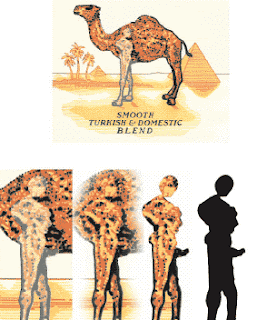 Neoclassicism in “Napoleon on Horseback at the St. Bernard Pass”, by Jacques-Louis David, expresses the heroism of a character with great precision in the drawing details and precision. David freezes the movement and enhances the figure of Napoleon, looking like a hero of antiquity. Again the political blurb brings out the emperor with boldness and courage is capable of leading France through the vicissitudes of history.
Neoclassicism in “Napoleon on Horseback at the St. Bernard Pass”, by Jacques-Louis David, expresses the heroism of a character with great precision in the drawing details and precision. David freezes the movement and enhances the figure of Napoleon, looking like a hero of antiquity. Again the political blurb brings out the emperor with boldness and courage is capable of leading France through the vicissitudes of history.Throughout the long career of Jacques-Louis David, demonstrated various elements that reflected their membership in the neoclassical movement: the admiration of antiquity, the desire to express political messages and moral care of the formal aspects; also the cult of Napoleon. Indeed, abundant carved and painted portraits were part of the revolutionary blurb strategy of the rule of Napoleon, the first modern dictator.
Citizen Kane is a 1941 American drama filmed by Orson Welles. The film traces the life and career of Charles Foster Kane, a man whose career in the publishing world born of idealistic social service, but gradually evolves into a ruthless pursuit of power.
This film depicts the heroism of a social icon, as well as the empire he created his name in history, according to the film. Orson Welles uses techniques, such as neoclassicism, to represent the virtuosity and presence of its main character. This character was based on a leading businessman of the era, William Randolph Hearst, the film explicitly the entrepreneur's life, but changing the names and some circumstances in it.
 The most innovative technical aspect of Citizen Kane is the extended use of deep focus. In nearly every scene in the film, the foreground, background and everything in between are all in sharp focus. Another unorthodox method used in the film was the way low-angle shots were used to display a point of view facing upwards, thus allowing ceilings to be shown in the background of several scenes. We can find several scenes that show the lead character, like Napoleon Bonaparte, but there is one specific scene that shows the viewer the potential and power of Citizen Kane. This scene is where citizen Kane postulated himself, and was on a dais. The angle of the camera, the background of his face, the chiaroscuro of the scene, the feeling of superiority and posture of the character fascinating insight into the potential of an image on the viewer, an image of explicit heroism that Neoclassicism was showed a long time ago.
The most innovative technical aspect of Citizen Kane is the extended use of deep focus. In nearly every scene in the film, the foreground, background and everything in between are all in sharp focus. Another unorthodox method used in the film was the way low-angle shots were used to display a point of view facing upwards, thus allowing ceilings to be shown in the background of several scenes. We can find several scenes that show the lead character, like Napoleon Bonaparte, but there is one specific scene that shows the viewer the potential and power of Citizen Kane. This scene is where citizen Kane postulated himself, and was on a dais. The angle of the camera, the background of his face, the chiaroscuro of the scene, the feeling of superiority and posture of the character fascinating insight into the potential of an image on the viewer, an image of explicit heroism that Neoclassicism was showed a long time ago.




